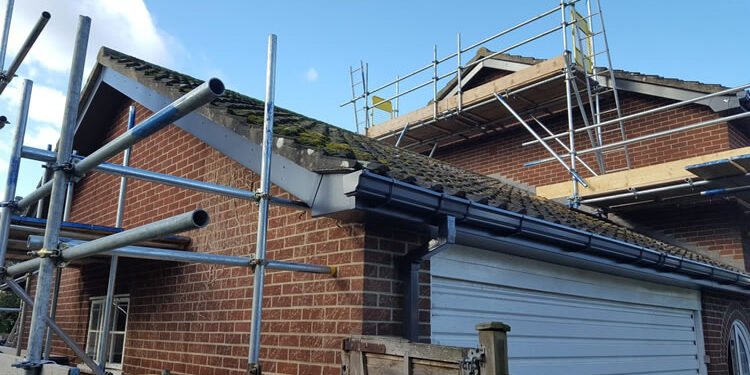Last Updated on August 24, 2023 by admin
A roofer builds, repairs and constructs new roofs on commercial and residential buildings. They also monitor the installation process and ensure it follows construction plans and specifications. Roofers use roofing materials such as shingles, slate, asphalt, metal, wood, and tiles. They may also spray materials to bind, seal, insulate, or soundproof sections of structures. A competent tradesperson with a focus on building, repairing, and maintaining roofs is a roofer. They ensure a roof is correctly erected and functioning and work with various roofing materials, including asphalt, metal, tile, and wood.
Roofers frequently work on residential, commercial, and industrial structures. Construction companies and roofing businesses can employ them or operate independently as independent contractors. They may be responsible for cutting and measuring materials, adding insulation, using weatherproofing techniques, and sealing seams to stop leaks. To reduce the danger of accidents, roofers must be physically fit, able to work at heights, and well-versed in safety protocols.
Repair
A roofer may be unable to fix your house in a day, but they can usually give you valuable advice. They can also give you tips and tricks on protecting your belongings from the elements, especially your roof. They may also recommend the best roofing companies in Kansas City to hire for any roofing needs you have. Aside from installing and maintaining the most extensive, worst shingle, a roofer can also help you save money on your home energy bill by suggesting a few small changes to your heating and cooling system, such as adding insulation to your attic or replacing your ductwork. A good roofer should be able to tell you how much you can expect to save on your energy bills and provide you with a free estimate for any future work that may need to be done.
Installation
Roofers are responsible for the installation of roofs on all types of buildings. It includes residential, commercial, and industrial structures. They also help with repair work. Their responsibilities include inspecting job sites, taking measurements, and choosing suitable roofing materials for each project. They install shingles, tiles, or other roofing materials and secure them in place. In addition to being physically challenging, installing a roof requires precision and spatial perception. The roofer must take detailed measurements to calculate the material needed and then lay down layers of materials to create a lasting roof cover. It also requires high skill and experience in using ladders, scaffolding, and other tools.
Maintenance
Roofers install, repair, and replace the roofs of residential and commercial buildings. They also repair storm damage and perform maintenance on roofs that are leaking or have a crack in them. They use a variety of roofing materials, including shingles and metal. During maintenance, a roofer inspects the roof to determine if it is safe and free from hazards. They then take measurements and calculate the materials needed to complete the project. They may also remove snow or water from the roof to prepare it for applying roofing material. They use ladders and scaffolding to access the roof and set up safety barriers and other equipment.
A roofer also cleans the work site and equipment after each job to ensure safety. They also liaise with clients and contractors about the details of the job. The maintenance process is essential for preventing breakdowns and extending the life of assets. It also saves time and money and helps avoid spare parts replacement or system downtime.
Inspection
The roof is essential to your home, protecting you from the harshest weather. Routine inspections are necessary to ensure your roof performs at its best year-round.
A professional should perform a practical roof inspection, so you must choose one with a solid reputation. In addition to checking for apparent damage, a good inspector will inspect your entire roof system from top to bottom. To guarantee that the job site is secure and risk-free, the roofer will begin each day by doing an inspection. They will measure the project and evaluate the supplies required. The first step in a roof inspection is to check for water intrusion and moisture inside your home. It involves looking inside the attic, interior walls, and ceilings for water leakage or mildew signs. Next, the roofer will ascend the roof to examine its construction and flashing. This inspection is essential because it helps identify any underlying problems that may not be obvious to the eye.
A competent inspector will also look for common roofing issues such as missing, cracked, or cupped shingles and broken shakes or tiles. He will also examine the gutters and downspouts for any evidence of granules stripped away by UV radiation, an indicator that your shingles are nearing the end of their lifespan.
Your roofer should also inspect the penetration seals on your roof, including vent pipes, media installations and other items that create holes in your roof. These penetrations must be covered by boots, seals or flashing to keep water from entering your home.
Read more interesting articles on Today world info










